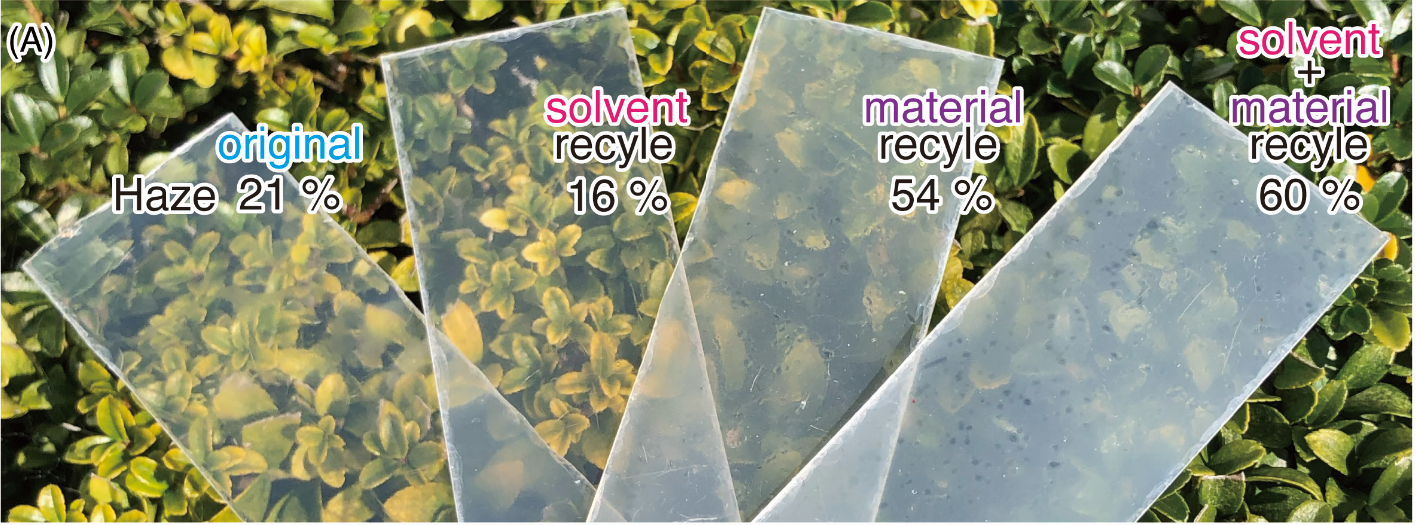Every year, over 400 million tonnes of plastic are produced. About five percent of that ends up in rivers and eventually the sea, or is thrown directly into the ocean by the fishing industry. Plastic, whether it breaks down into microplastic or not, is an unfolding environmental and health catastrophe that affects the whole planet. Many solutions have been proposed and researchers have now showcased a new material that looks and acts like plastic without the impact.
The team is calling it transparent paperboard (tPB). The material is made completely of cellulose and its composition is equal to that of regular paper. The starting point is using regenerated cellulose from plants and wood (but not exclusively as they have demonstrated) and creating a hydrogel that can be shaped and is transparent.
“This was achieved by the simple drying of thick, bulky, and shapable cellulose hydrogel prepared using aqueous lithium bromide (LiBr) solution as the solvent, where cellulose solution solidifies without the introduction of nonsolvents: Cellulose dissolves upon heating and solidifies upon cooling,” the authors explained in the paper.
“With this process, tPB emerges as a transparent, three-dimensional thick material made solely from pristine cellulose, capable of taking various forms ranging from millimeter-thick board to cup or straw shapes.”

The process to create the transparent paperboard
Image credit: Isobe et al., Sci. Adv. 11, eads2426 (2025)
We’re sure that anyone who has had to deal with paper straws falling apart over a long drink would be happy to know that it is possible to make a paper straw that doesn’t immediately disintegrate. But still, the material is biodegradable in a relatively short amount of time.
The team looked at what would happen if the tPB fell into the ocean. They compared how quickly it would disappear if this plastic fell into shallow water or if it sank into the deepest abysses. Even at the bottom of the oceans, this alternative to plastic would disappear in less than a year – and degradation there is five to 11 times slower than in coastal regions.
The fact that it is transparent, biodegradable in a natural environment, and plastic-like is already fantastic, but there is more. The researchers have shown that boiling water can be poured into a tPB cup with minimal leaks over the course of three hours. With a thin resin coating, no leaks are formed.
These results already are exciting, but the team wanted to test even more. They wanted tPB to be more than just a biodegradable plastic, so they looked into recyclability. They found that both the solvent used to produce it and the tPB itself can be recycled, although it creates a plastic that is less transparent. They also showed that it is possible to use upcycled materials to make this tPB.

The recycling process in the lab might alter the transparency, but it seems like a small price to pay.
Image credit: Isobe et al., Sci. Adv. 11, eads2426 (2025)
“Through the utilization of unexploited cellulose wastes such as worn fabrics, waste papers, and low-value wood, tPB can play a pivotal role in the sustainable circular economy of the future,” the authors write.
The study is published in the journal Science Advances.
Source Link: Goodbye Soggy Straws? Transparent Biodegradable Paper Material Can Handle Even Hot Water